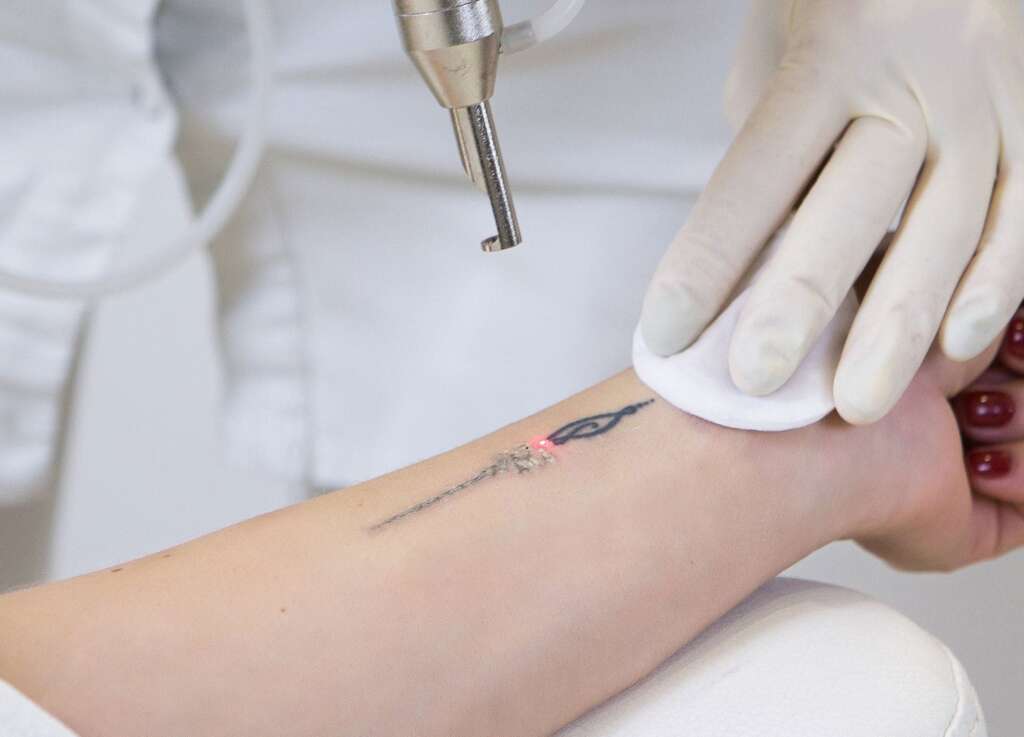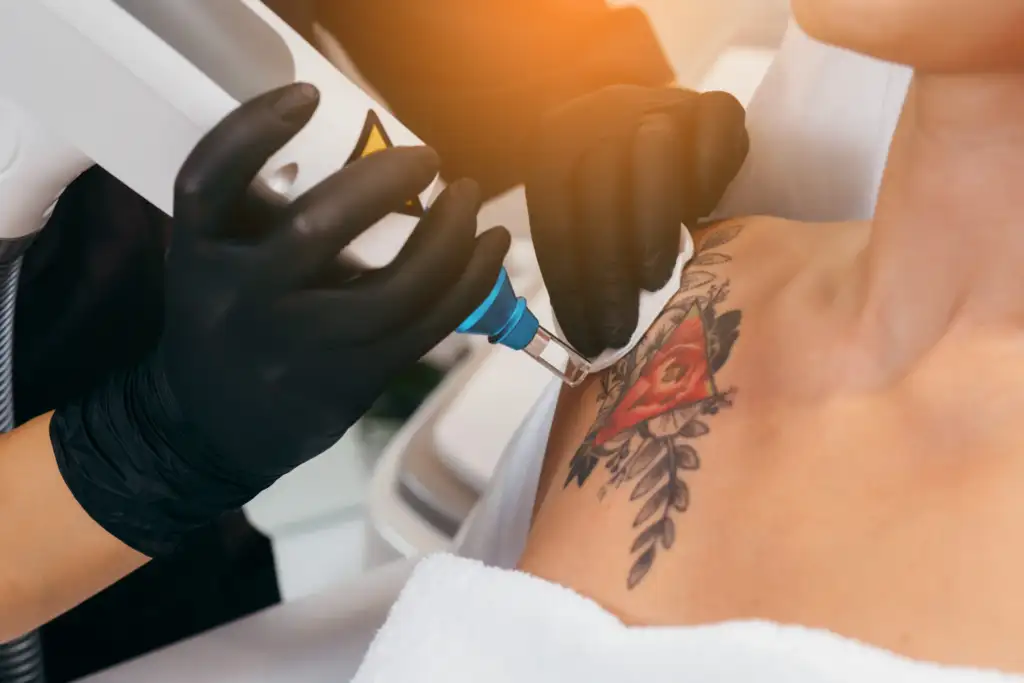When considering tattoo removal, many factors come into play, including the size, location, and color of the tattoo. However, one aspect that often gets overlooked is the role of skin tone in the effectiveness of tattoo removal treatments. In this article, we’ll explore how your skin tone can impact the success of your tattoo removal journey.

Table of Contents
Understanding Laser Tattoo Removal
Laser tattoo removal works by targeting the pigment in the tattoo ink with high-energy laser pulses. The laser breaks down the ink particles, allowing your body’s immune system to naturally remove them over time. The most common type of laser used for tattoo removal is the Q-switched laser, which is highly effective at targeting specific pigments without damaging the surrounding skin.
The Fitzpatrick Scale and Skin Types
Skin tones are typically categorized using the Fitzpatrick scale, which ranges from Type I (very fair) to Type VI (very dark). This scale helps dermatologists and tattoo removal specialists determine the best approach for each individual’s unique skin tone and type. Understanding your skin type is crucial when considering tattoo removal, as it can impact the number of sessions required and the overall effectiveness of the treatment.
Challenges for Darker Skin Tones
Individuals with darker skin tones (Fitzpatrick Types IV-VI) may face additional challenges when it comes to tattoo removal. Darker skin contains more melanin, which can compete with the tattoo ink for absorption of the laser energy. This means that those with darker skin may require more tattoo removal sessions to achieve the desired results. Additionally, there is a higher risk of hyperpigmentation or hypopigmentation (darkening or lightening of the skin) in individuals with darker skin tones.
Tailoring Treatments for Different Skin Tones
To address the unique needs of different skin tones, tattoo removal specialists often adjust their techniques and laser settings. For example, they may use longer wavelengths or lower energy settings for darker skin tones to minimize the risk of side effects. It’s essential to choose a reputable and experienced provider, such as those offering comprehensive tattoo removal Moonee Ponds, who can tailor the treatment to your specific skin type and tattoo characteristics.

The Importance of Pre and Post-Treatment Care
Regardless of your skin tone, proper pre and post-treatment care is crucial for achieving the best results and minimizing the risk of side effects. Before your tattoo removal session, protect your skin from sun exposure and avoid tanning. After the treatment, keep the area clean, moisturized, and protected from the sun. Your tattoo removal specialist will provide you with specific instructions tailored to your individual needs.
Realistic Expectations and Patience
Tattoo removal is a gradual process that requires multiple sessions spaced several weeks apart. The number of sessions needed can vary depending on factors such as tattoo size, color, location, and skin tone. It’s important to have realistic expectations and be patient throughout the process. While individuals with lighter skin tones may see results more quickly, those with darker skin can still achieve excellent results with the right approach and care.
Consulting with a Qualified Tattoo Removal Specialist
To ensure the best possible results and minimize the risk of side effects, it’s crucial to consult with a qualified and experienced tattoo removal specialist. They can assess your unique situation, taking into account your skin tone, tattoo characteristics, and overall health, to develop a personalized treatment plan that meets your needs and goals.
In conclusion, while skin tone does play a role in tattoo removal effectiveness, it’s just one of many factors to consider. By understanding your skin type, choosing a reputable provider, and following proper pre and post-treatment care, you can achieve the best possible results on your tattoo removal journey, regardless of your skin tone.


